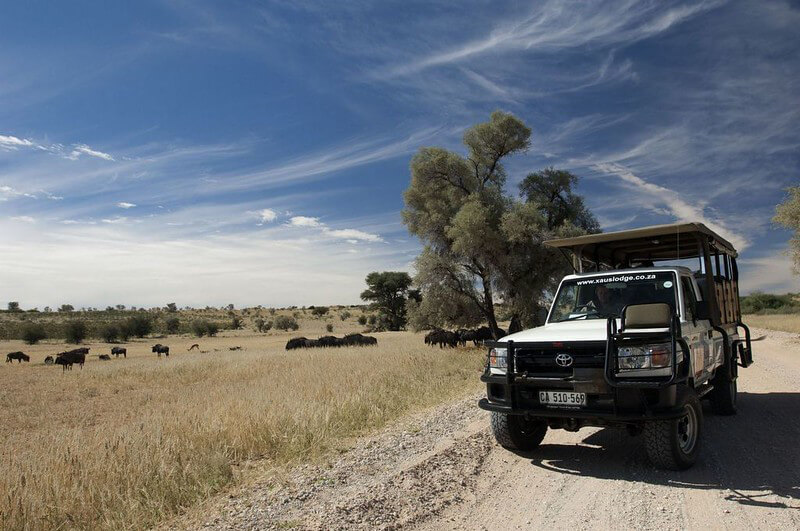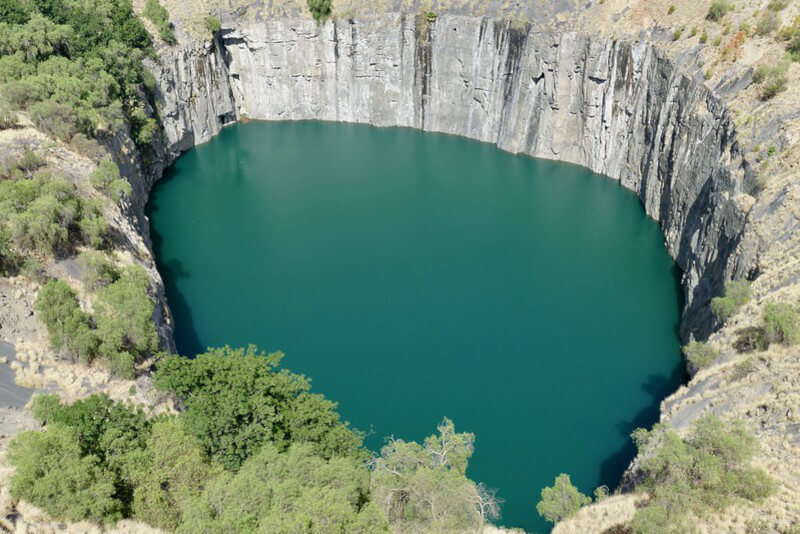The vast Northern Cape of South Africa is an untamed and sun-burnt terrain consisting of hardy molten mountain ranges, expansive red desert, sandy flatlands, and acres upon acres of tranquility. After sunset, the vast skies of the Northern Cape erupt with stars. Observe wildebeest congregating on the plains while lions prowl around in the Kalahari Desert. Explore the past at a diamond mine that dates back to the 19th century, kayak your way down the Orange river, and trek to the nation’s largest waterfalls. The largest and least populated area of South Africa is home to an abundance of attractions and activities for visitors to enjoy. Just a few of the reasons why you should spend your vacation in the Northern Cape are listed below.
Wildlife Safari and Game Drives

Your dream vacation probably involves going on a safari to see wild animals. You could travel to the massive Kgalagadi Transfrontier Park, which is located on the border between Botswana and South Africa. Alternatively, you could visit the more manageable Maloka National Park or pony up the cash to visit the exclusive Tswalu Kalahari Reserve. You could even try your hand at all three of them. On the other hand, you should be able to check this off your list almost without a doubt.
Kgalagadi Transfrontier Park
Envision a park that is 37,000 square kilometers in size, is nearly twice the size of Kruger National Park, and is ruled by rippling red desert dunes, thornveld, and salt pans. This park is what we mean when we say that this park is massive. It is an incredible landscape, full of panoramic views and uninterrupted skies, which sparkle with countless stars when night falls. Because of this, as well as the abundant wildlife, Kgalagadi is home to some of the most memorable safaris in all of South Africa.
The Kgalagadi Game Reserve is home to a wide variety of animals, including herds of blue wildebeest, gemsbok, giraffe, hyenas, and springbok, as well as adorable meerkats that steal the show. But the big cats, such as the enigmatic leopard, the cheetah, and the powerful black-maned Kalahari lion, have got to be this place’s most popular attractions. However, those who enjoy watching birds will also be very pleased. There are approximately 280 different species of birdlife. During the summer, keep an ear out for the Rufous-cheeked Nightjar at night.
The park provides visitors with several different lodging options, such as 3 fenced rest camps and 3 wilderness encampments. In addition, the rest camps have swimming pools, which are fantastic for children who are overheated and prone to tantrums (and adults).
Oh, the Opulence!
The Khomani San and Mier populations own Xaus Lodge, which features a pool and a comfortable communal lounge where guests can unwind before dinner. Guests can also swim in the pool. They provide facilitated safaris, as well as strolls with Bushman trackers and the opportunity to see Bushman creatives at work making traditional items.
Mokala National Park
Mokala National Park encompasses a total area of 48 000 acres and is home to a wide variety of animals that are in danger of extinction. The black rhino, the white rhino, the Burchell’s zebra, the tsessebe, the giraffe, and the roan and sable antelope are just some of the animals that you can see on a game drive. The rocky outcrops of Mokala are home to a diverse array of birdlife, such as the black-chested Prinia, the lappet-faced vulture, the martial eagle, and the tawny eagle.
Tswalu Kalahari Reserve
The biggest private wildlife reserve in South Africa offers a haven to some of the continent’s most well-known and beloved animals, including big cats, giraffes, and zebras. There is a dedication to ecotourism and preservation, and breeding programs are helping native species, like the sable and roan antelope, to continue existing in the wild.
The pinnacle of a luxurious safari experience is a stay at Tswalu. During the journey, you will have a private guide and tracker at your disposal, and when you return to base, you will be treated to spa treatments, given access to a gym, and provided with first-rate meals and accommodations.
The Diamond Industry: The Big Hole and Mine Museum in Kimberley

When you visit Kimberley, you can get a peek into the city’s turbulent history of diamond mining by looking into the Big Hole. After a shepherd discovered a massive one weighing a cool 83.5 carats nearby in 1871, multitudes of prospectors migrated to Kimberley with picks and spades, in search of the sparkling gems, and Kimberley became a hotbed for gem mining. When the mine finally shut down in 1914, it had evolved into the largest hand-dug excavation in the history of the world and had produced 2,722 kilograms of precious stones.
There is an observation platform above the Big Hole, in addition to a simulation model mine shaft. The audio-visuals do an excellent job of recreating the difficult working conditions that the miners must have been subjected to. In the Exhibition Centre, you will find more information about the history of diamond mining, as well as a crypt safeguarding genuine diamonds, including the Eureka, which was the initial diamond unearthed in South Africa.
The museum’s Old Town, which has been partially restored and preserved, presents an intriguing opportunity to journey back in time to the diamond-rush era. It consists of a chapel, a bar, a boxing academy, a tobacco shop, and sleeping quarters for mine workers. The children will have a great time riding the vintage tram that departs from Old Town and travels a portion of the way around the periphery of the Big Hole.
Kimberley’s Rich Heritage and Unique Culture
On your trip to South Africa, you shouldn’t miss the opportunity to check out some of the top museums and galleries in Kimberley while you’re there.
The Museum of the McGregor Family
The McGregor Museum is home to a wide variety of exhibits that cover a variety of topics, including the heritage of diamond mining in Kimberley, and the difficult fight for the country’s democracy. The Ancestor’s Gallery is a fascinating exhibition that explores the ancestry of people who have lived in the Northern Cape for millions of years; it is not to be missed.
Gallery of the Duggan-Cronin
In the dialect of the Matabele people, Alfred Duggan-Cronin was given the nickname “Thandabantu,” which translates to “somebody who loves people.” The objects on display in the Duggan-Cronin Gallery can shed some light on this question for you. In the year 1904, the Irish photographer started taking pictures of the miners who worked in South Africa. Subsequently, he traveled throughout South Africa and photographed the native people who lived there. Over 8,000 photos are currently on display, the vast majority of which were taken by Duggan-Cronin. Anyone who has even a passing curiosity about art, photography, or the past and present of South Africa needs to visit this place.
An Art Gallery Named After William Humphreys
The William Humphreys Art Gallery is widely regarded as one of the best art galleries in South Africa. Although it has an extensive collection of works by European Old Masters, the primary emphasis is placed on contemporary and traditional forms of art from South Africa. Additionally, it was among the first galleries in the country to acknowledge San rock paintings as legitimate works of art.

